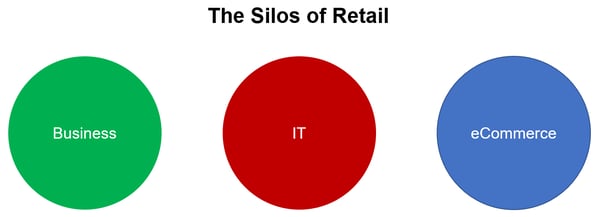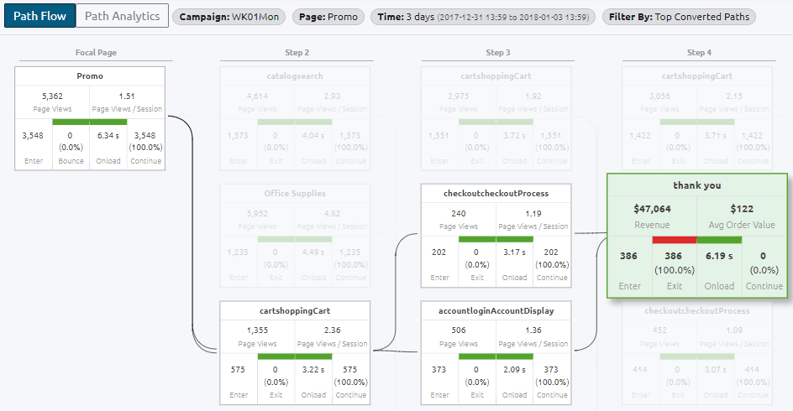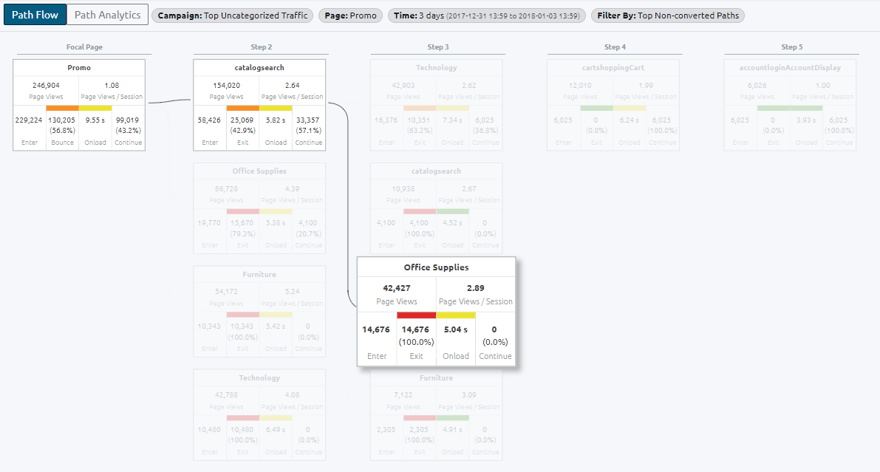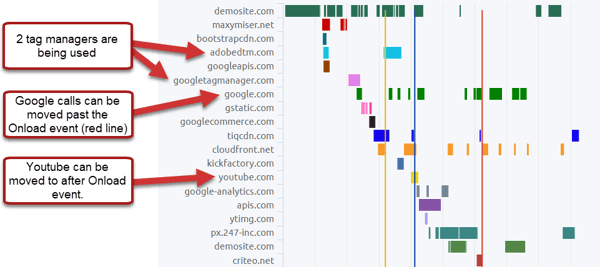2017 is in the rear-view mirror. We can all now breathe a big sigh of relief. Well, most of us. Those of us that didn’t get lucky and skate through the holiday period without a major outage, or even a micro-outage, can now look forward to 2018 and a fresh slate.
Now is the perfect time for you and your team to look at your eCommerce business and plan how you’ll take the next step in revenue attainment for your 2018 seasonal and major marketing campaign events.
Let’s start with the basics
The internet has changed the way the world shops. But what hasn’t kept pace is the measurement engines that have been developed by technology vendors over the last 20 years. These originated at the same time as the first e-business storefronts, which were no more than static Yellow Pages.
So as the internet matured and content moved from a static storefront to a more dynamic web with today’s OmniChannel selling strategies, a couple of things did not, and still are not, keeping pace: Organizational Structure and Technology.
Organizational Obsolescence
For traditional brick and mortar retailers, the typical organizational structure included Merchandising, Direct Marketing, Customer Relationship Management, etc.
But once IT departments emerged within traditional retailers, their organization grew organically, with people responsible for different pieces of the overall IT stack. (e.g. Director of Databases, Director of Networking, etc.)
And for both structures, technology vendors typically served these individual silos with tools to support the functions within these organizations.
Then along came eCommerce.
So what did retail management do? They created another silo. The eCommerce organization. This organization would have its own profit & loss (P&L), its own IT group, its own marketing group.
And when mobile exploded, yet another silo was created, especially in the IT area.
Which is where many retailers are today, and why many of them are struggling with what “OmniChannel” means to them.
How do you fix Organizational Obsolescence?
Simple. Tear down the silos. Treat your business like a product line. Organize around that product line. The retailers I work with that have done this have already turned the corner. You see them in the news. But not in a bad light.
Now that you’ve fixed the organization, what’s next? Technology.
Technology Obsolescence
Let’s look at an example in today’s eCommerce world.
Marketing Campaigns. And to keep it simple - Weekly Ads, Sunday Flyers, Black Friday, Cyber Monday.
These are run by the business. Marketing, Merchandising and Product teams that create content, navigation, branding, etc. Tools are used to plan, develop, layout and manage campaign effectiveness. All in silos.
Usually all analysis is done after the campaign is over. How’d it do? What was effective? What sold? What didn’t? What did customers do? What was the exit rate? What was the customer journey? Heat Map? Activity Map? Revenue?
And, at the same time, the IT department has a stable full of tools measuring the IT stack. Is it up? Is it down? How fast is the page? Real User Monitoring (RUM) tools were developed to look at page load time, page views, conversion rates, bounce rates, revenue, etc.
In the past these marketing and IT data sets were not integrated. Yet, both are very dependent each other.
So what if both sets of data were available in the same solution-set? Essentially aligning WHAT customers are doing with WHY they might or might not be doing it.
Use Case: One Solution for IT & Marketing
In this use case, the Retailer launches their weekly Loyalty rewards promotional campaign every Monday morning, with an e-mail blast to over 20 million of their closest friends and best customers. This e-mail staggers out in the early morning between 7:00AM and 8:30AM EST.
Since this campaign is very similar to one that ran last month, the retailer wishes to compare metrics from the two campaigns.
As you can see below, orders, visits, revenue and page views are all trending up over the previous campaign:
Now let’s flip over to the Customer Journey, where we can select the view for “Top Converted Paths” and see that everything is green. Page performance and exit rates along the entire journey are below thresholds. Customers are engaged and buying!

Now let’s view the “Top Non-Converted Paths” and see the journeys that left the site and didn’t purchase.
Exit rates and page speeds are higher on every page across the customer journey than their converting counter-parts. This is something that was looked into very early in the campaign to try to determine root cause and get a fix out quickly.
What happened?
We drilled down into each individual file on the website. One thing stuck out right away that was impacting page performance, and thus, the success of the overall marketing campaign.
Print.css was loading before shoppers can interact with the page (Yellow Line = DOM Interactive)
Print.css is a web style sheet that allows a user to print out the web page from the browser. In this case, that object alone was taking 0.90 seconds to load, which was impacting the overall customer journey. Just moving this file to load later in the page improved performance for every page in the customer journey.
Bottom line
Every object should be analyzed for performance and whether it is required to be loaded where it is in the customer journey. In this case, print.css should be loaded later. Does the customer really want to print out the page before all the content is viewable? Probably not.
Now let’s look at Tag Management. For Blue Triangle, this involves not only measuring the performance of each tag on the page, but also identifying where in the page each tag should be placed. This is particularly true for social media tags and product image tags like Scene7.
In 2018, this is how an integrated eCommerce business-driven team should manage their platform. There should be no separate IT organization looking at their “stack” while the marketing team sits back and waits for weekly reports from Hadoop or other post-analysis reporting tools developed in the 1990’s.
Both should be watching all the metrics impacting revenue. Traditional web performance metrics watched by IT only make sense when mapped directly to business metrics. Why? Because they are the “Why?”. If a campaign’s revenue is not meeting goals, the why could be that the most popular customer journeys are taking 10 seconds to load on every page.
Takeaway: Make this year the year of change
Organize your business around your business. The organization should be aligned with the use cases for go-to-market. The technology should drive the process.
Then your business will be in the news, and not in a bad light.
Let Blue Triangle help you attain that goal. The proof is in the revenue.

During the holiday rush, every shopper matters
Optimize the customer journey before the eCommerce event of the year.

.jpg)

